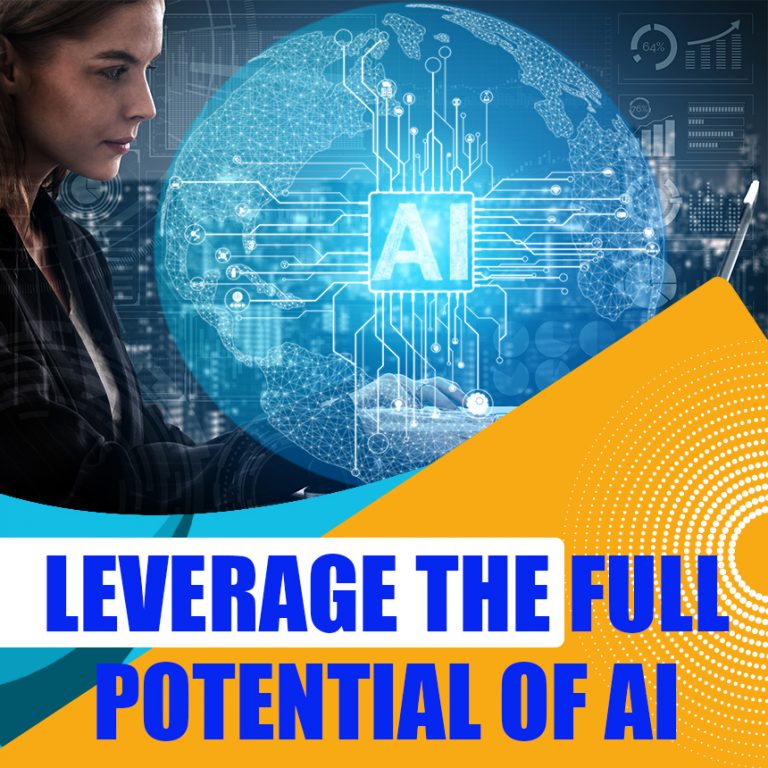
Incorporating Artificial intelligence (AI) in business is easy if the business owners or the companies have the right mindset or game plan for it. Engaging with AI technology to stay competitive in a market where AI and machine learning concepts are evolving thereby moving the benchmarks for your business is quite challenging. But it has to be done.
The primary hurdle to integrate AI for business is the problem with current approaches. AI adoption programs are still driven halfheartedly. However, today’s market conditions and environment demands a proper long-term vision and strategy, strong enough to drive the necessary business and organizational changes.
AI adoption in business:
Finite AI strategies focus more on the challenges at hand, like winning in your present market by adding a single intelligent feature to your product or beating the current competition with automation-based cost reductions. Despite this being a smart way to start without committing to a longer-term vision, it is confusing the much-needed focus on strategic investments to set up your business for the journey.
The IT industry has been quite vocal about broader adoption or industrialization of AI capabilities. Expectations are on an all-time high as we saw significant advances in base technologies, data and solution ecosystems as well as concept adoption towards multiple industries as well. As per a PWC study, AI could contribute up to $15.7 trillion to the global economy in 2030, more than the current output of China and India combined.
AI could contribute up to $15.7 trillion to the global economy in 2030, more than the current output of China and India combined – PWC Study.
Despite the stats looking promising, many companies are still struggling to cope with the new world of AI, and a lot of AI initiatives still do not get any further than a proof of concept or a prototype state. Now begs the question of why does this represent a challenge, if trial and error are a natural part of any innovation processes?
Many companies are not at all shaped for iterative innovation processes and are therefore likely to discontinue their efforts before they have had a chance to mature. A rigid culture of ‘quick wins’ and ‘fast results’ limits the opportunity space for impactful AI and data-driven innovation.
Related: Emerging AI Trends To Watch In 2020
All these factors make AI adoption an infinite game — and how do you play it?
Elements of an Infinite AI adoption strategy:
Planning for something that is constantly evolving is a challenge, let alone adapting. We bring in some elements for your benefit in this blog.
- Business-critical use cases: For a healthy AI-adoption strong use cases and a long-term vision is necessary. It is often smart to experiment with easier problems in the beginning when data is available and best practices are established. But to ensure strategic impact and continuous management buy-in your AI-strategy needs to address business-critical use cases. To put an AI-driven concept into production is not easy. It includes significant requirements on infrastructure, competence, sales and maintenance processes, and not to forget the dedicated compliance and governance. The selected use cases must, therefore, be able to justify all the needed startup efforts.
- Moving from AI on top to AI-first concepts: A redesign of the related business processes is required to realize the full transformational potential of AI-concepts and often the underlying business model as well. Organizations need time to mature their concept understanding from putting AI capabilities on top of existing structures (“AI on top”) to redesigning their solution around the AI-capabilities (“AI-first”).
- Agile project
management connected to a high-level long-term roadmap commitment:
Technology, as well as our understanding of its possibilities, is constantly changing. Project priorities and solution details should have the flexibility to change and mature accordingly. - Make and buy strategies: Creating your intellectual property around your AI-solutions can be a strategic asset but is expensive and requires continuous effort. As a rule of thumb, organizations should only pursue it if the AI application area is close to their value generation process and core business model and if the IP is hard to copy.
Companies’ AIs adoption game:
AI adoption is always limited to a company’s culture and strategy. It is only when the entire company is ready to play and know the rules of the infinite game, will it be able to apply it in a new area. In his book ‘The infinite game’, S. Sinek defined some ingredients that enable infinite strategies and we jot down it for your leisurely read and they are: Advance a just cause, Trusting teams, Worthy rival, Existential flexibility and Courage to lead.
It is safe to conclude that many scientists currently researching AI agree that we are still in the infancy of AI technology adoption and that we are relatively far from being able to imagine the related changes to business and society. The crucial skillset for business owners and organizations in such an environment is to embrace change as part of their culture.
Related: Real-time AI Revolutionizes Business Decisions and How



Dan Begue
4 years ago